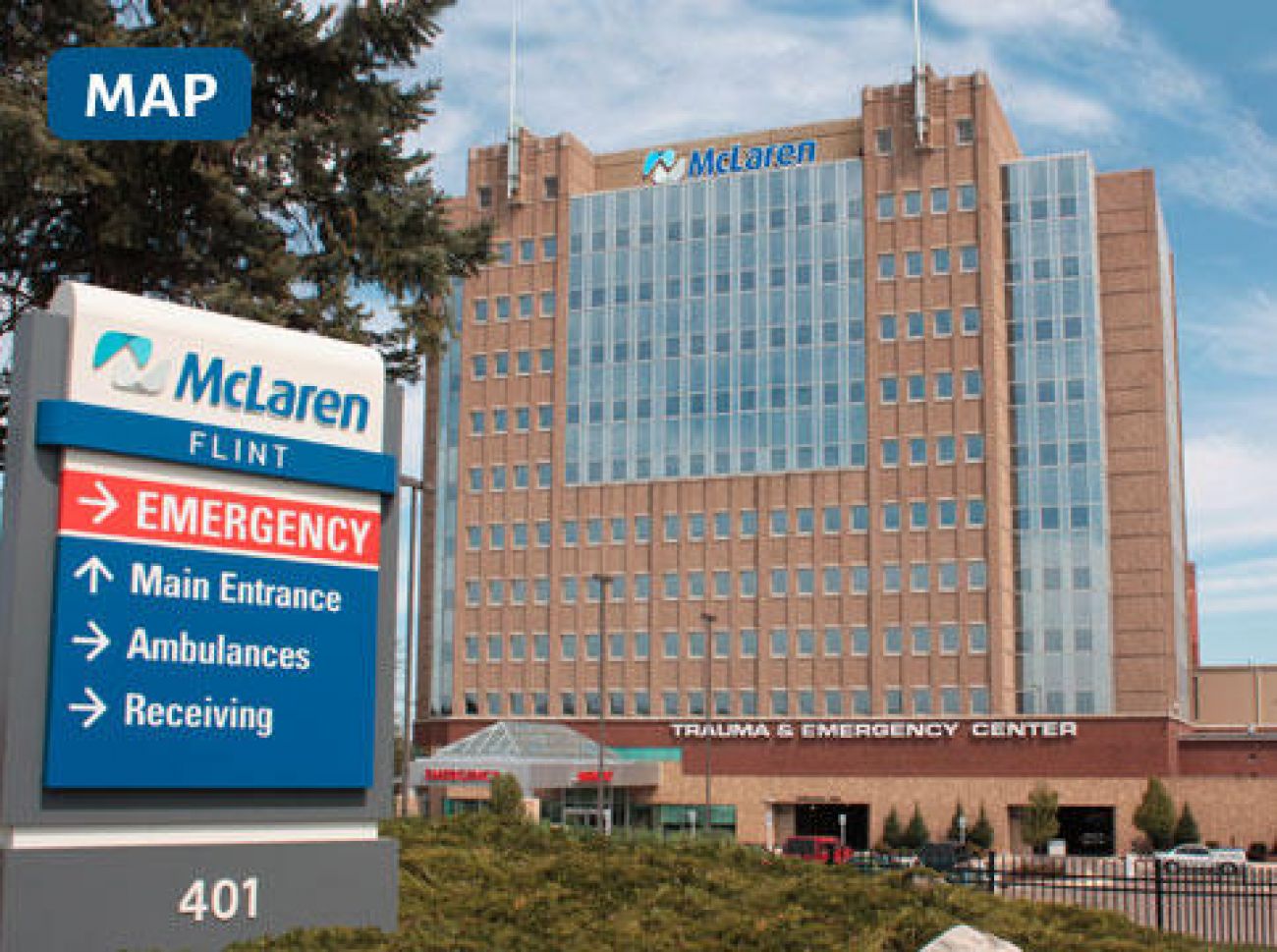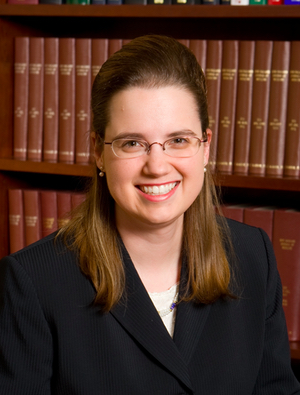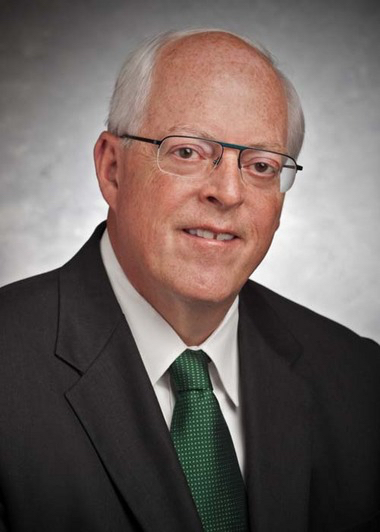24 Michigan hospitals were penalized for patient safety gaps. Is there a better measure?

When the federal government’s Centers for Medicare & Medicaid Services released its annual ranking of hospitals by how well they protect patients from harm late in 2015, it didn’t spark front-page headlines. Even with a searchable database to look up hospitals in one’s own backyard, the story flew under the radar.
But the “hospital-acquired condition” rankings, which rate hospitals by how well they control infections and other conditions that patients can pick up within their walls, and penalize those that fall short, resulted in a combined loss of $13 million for 24 Michigan hospitals. That figure represents 1 percent of the Medicare payments to the hospitals that fell within the lowest 25 percent of the rankings (Using a 10-point scale, those hospitals with numbers above 6.75 were financially penalized).
They include some of the state’s busiest facilities, and include three Detroit Medical Center facilities (Detroit Receiving, Sinai-Grace and Harper Hospital), one in Pontiac (St. Joseph Mercy Oakland) and, adding to an accumulation of health-related woes in the city, two in Flint (Hurley and McLaren), although recent problems with lead-laced water and legionella bacteria had nothing to do with their showing.
McLaren Flint’s medical director, and other health-care experts, cautioned against accepting the rankings at face value, saying they reflect a complicated patient-care reality that does not impact all hospitals equally. While advocating for high standards, they said there are better ways to incentivize improvement inside hospital facilities without penalizing hospitals that fall short due to conditions beyond their control, such as having a higher percentage of impoverished patients who may be more susceptible to infection.
As in many issues reduced to a single number, nuance is lost, said Akin Demehin, senior associate director of policy for the American Hospital Association, an industry group based in Washington D.C.
“What we’ve found with HACs specifically is that hospitals that care for complex patients – academic centers, teaching hospitals, large urban hospitals – tend to do quite a bit worse,” Demehin said. Research bears that out. And it’s not necessarily because their infection-control measures are inadequate, he said, but rather, that they tend to have a higher percentage of sicker, poorer, more medically fragile patients in the first place.
But that doesn’t tell the whole story, either.
Nationwide, hospital-acquired conditions are a stubborn problem with few easy answers – but there are a few, and more on that in a bit. The U.S. Centers for Disease Control and Prevention estimates that in one recent year, 722,000 patients suffered infections related to hospitalization, and 75,000 of them died.
Most HACs are infections. Some, like MRSA (Methicillin-resistant Staphylococcus aureus) or clostridium difficile, known as c. diff, are difficult to treat and may be drug-resistant. Others are bloodstream or urinary-tract infections associated with catheters or central lines, i.e., a IV catheter used to introduce medications or other fluids over long periods of time. The government also looks at infections at surgical sites on the body and pressure ulcers, more commonly known as bedsores.
The HAC rankings, filled with complicated number-crunching, has come under criticism for creating an imperfect measurement of hospitals’ efforts to shield patients from harm. The rankings were included as part of the Affordable Care Act in a push to improve patient safety and reduce health-care costs.
HACs are estimated to add billions of dollars a year to the nation’s healthcare bill. Those who run hospitals acknowledge the need to improve health outcomes and performance, regardless of who they serve or where they serve them. Demehin and others says they just wish there were a better way to do it than the current rating system.
“All of these measures are pretty complicated,” said Dr. Jennifer Meddings, an assistant professor at the University of Michigan School of Medicine who studies patient safety. The ranking program is still new, and the measurements are undergoing ongoing debate, study and refinement. For all the simplicity of a 1-to-10 scale, what it reflects can be far more nuanced.
“They’re not simple in any respect,” Meddings said. “There are entire groups of researchers trying to figure this out.”
A poor score may lead some prospective patients to assume the hospital they’re considering for elective surgery is somehow unsafe, said Demehin, of the hospital industry group. But many of these hospitals “serve more disadvantaged communities with more chronic conditions. There are higher rates of smoking, etc. The patient population is a little more complex, with some underlying disease conditions that can make them more susceptible to infections.”
Laura Wotruba, director of public affairs for the Michigan Health and Hospital Association, the state-level industry group, also said that urinary catheters and especially central lines are more common in intensive-care units; “that’s one reason you see big (health) systems popping up” at the bad end of the rankings. The hard-case patients are far more likely to be transferred there from smaller hospitals.
Keeping it simple
But hospital infections aren’t merely a matter of size and location. In 2003, the Michigan Health and Hospital Association formed the Keystone Center, an initiative dedicated to improving patient safety “through the diffusion of change using patient-centered, evidence-based interventions supported by cultural improvement,” according to its website.
What that translates into is the need for hospital staff to ruthlessly adhere to basic protocols to reduce the possibility of infection, often something as simple as ensuring that doctors and nurses scrupulously wash their hands between room visits.
In his 2010 book, “The Checklist Manifesto,” surgeon and medical writer Atul Gawande argues for the transformative power of using simple checklists in intensive care to reduce mistakes and accustom staff members to doing things the right way, every time, even in the often fast-paced whirl of patient care.
An excerpt published in the New Yorker in 2007 details the work of the Keystone Center and its work with critical-care specialist Peter Pronovost, from Johns Hopkins Hospital. Pronovost adapted a checklist for ICU patients designed to reduce central-line infections. At Johns Hopkins, Gawande writes, it went like this:
“On a sheet of plain paper, he plotted out the steps to take in order to avoid infections when putting a line in. Doctors are supposed to (1) wash their hands with soap, (2) clean the patient’s skin with chlorhexidine antiseptic, (3) put sterile drapes over the entire patient, (4) wear a sterile mask, hat, gown, and gloves, and (5) put a sterile dressing over the catheter site once the line is in. Check, check, check, check, check. These steps are no-brainers; they have been known and taught for years. So it seemed silly to make a checklist just for them. Still, Pronovost asked the nurses in his I.C.U. to observe the doctors for a month as they put lines into patients, and record how often they completed each step. In more than a third of patients, they skipped at least one.”
Pronovost started his project at Sinai-Grace Hospital in Detroit, part of the Detroit Medical Center system. In three years, Gawande writes, the infection rate in Michigan’s I.C.U.s decreased by 66 per cent.
Today, the Keystone Center continues its work with Michigan hospitals, and among other outcomes claims a 34 percent reduction in septic-shock deaths from 2011-14; a 27 percent decrease in catheter placements from 2012-14 (with a stable infection rate); and a 69 percent decrease in central-line infections from 2004-14, saving tens of millions in health-care costs.
A touchy topic
In Michigan, some health systems ended up with facilities at either end of the rating range. Spectrum Health, based in West Michigan, saw its Zeeland Community Hospital rate a very favorable 2 on the 10-point scale, well below the 6.75 threshold for financial penalties. But its Butterworth Hospital in Grand Rapids got an 8.75, earning a penalty. A spokeswoman for the system said no representatives were available to discuss the disparity.
Both Flint hospitals, McLaren and Hurley, received poor rankings. (The legionella bacteria detected in McLaren’s water supply does not appear to have affected its rating, because that bacteria is not measured as part of the assessment.)
Dr. Michael McKenna, medical director at McLaren Flint, offered all of the aforementioned caveats in an interview with Bridge. And he added another: The data reflected by the December rating was already 18 months to two years old by the time it was released, and patient procedure refinement is a process that changes constantly.
“If there’s an issue and we got it completely fixed today, it wouldn’t go into the ratings for another year or more,” McKenna said.
McLaren is committed to “doing everything we possibly can to limit preventable harm,” including Pronovost’s checklist system. When staff follows the proper procedure for inserting central lines every single time, for instance, infections can be reduced to near zero.
“There are McLaren facilities that have gone 400-500 days without a single” infection, he said. Other infection-prone procedures – catheter and ventilator insertions in particular – are regularly refined for the same reason.
“One of the things we talk about is eliminating variability,” McKenna said. “We’re trying to develop standardized care processes across the organization.”
Any numeric rating with a threshold-penalty attached will invariably treat institutions on either side of a hair-thin line differently, Demehin said, one of the association’s objections to the rankings.
“You can be penalized for being a hundredth of a percent worse than the next one on the scale,” he said. “(The AHA has) generally been supportive of pay-for-performance programs, but they have to be designed carefully.”
Payment penalties aren’t the most effective way to encourage continuous improvement, Demehin argued, suggesting instead a reward system, with a potential financial downside for falling short.
Wotruba, from the Michigan hospital group, added that it’s common for hospital scores to rise and fall, sometimes sharply, from year to year.
“One year doesn’t make a trend,” Wotruba said. “(A hospital) might have had, hypothetically, a MRSA issue, which was addressed, but it spiked enough to end up on the list. In smaller settings, those bumps become more meaningful.”
Wotruba said patients who are nervous about an upcoming stay at any hospital should talk to their doctors about the risks involved. Doctors are familiar with hospital culture, and might offer insight and suggestions on how to minimize complications, stressing patient education.
Or they can use various hospital-comparison sites. The Keystone Center has one, as does Medicare.gov.
Most patients don’t put that much consideration into choosing a facility, Meddings said, instead relying on word-of-mouth recommendations from people they know, or else relying on their doctor’s preference.
But bottom line, even the cleanest health-care facility is, after all, full of sick people, Wotruba said, adding, “Hospitals are not sterile environments.”
See what new members are saying about why they donated to Bridge Michigan:
- “In order for this information to be accurate and unbiased it must be underwritten by its readers, not by special interests.” - Larry S.
- “Not many other media sources report on the topics Bridge does.” - Susan B.
- “Your journalism is outstanding and rare these days.” - Mark S.
If you want to ensure the future of nonpartisan, nonprofit Michigan journalism, please become a member today. You, too, will be asked why you donated and maybe we'll feature your quote next time!


 Dr. Jennifer Meddings studies patient safety at the University of Michigan Medical School.
Dr. Jennifer Meddings studies patient safety at the University of Michigan Medical School. Dr. Michael McKenna is medical director for McLaren Health System in Flint.
Dr. Michael McKenna is medical director for McLaren Health System in Flint.